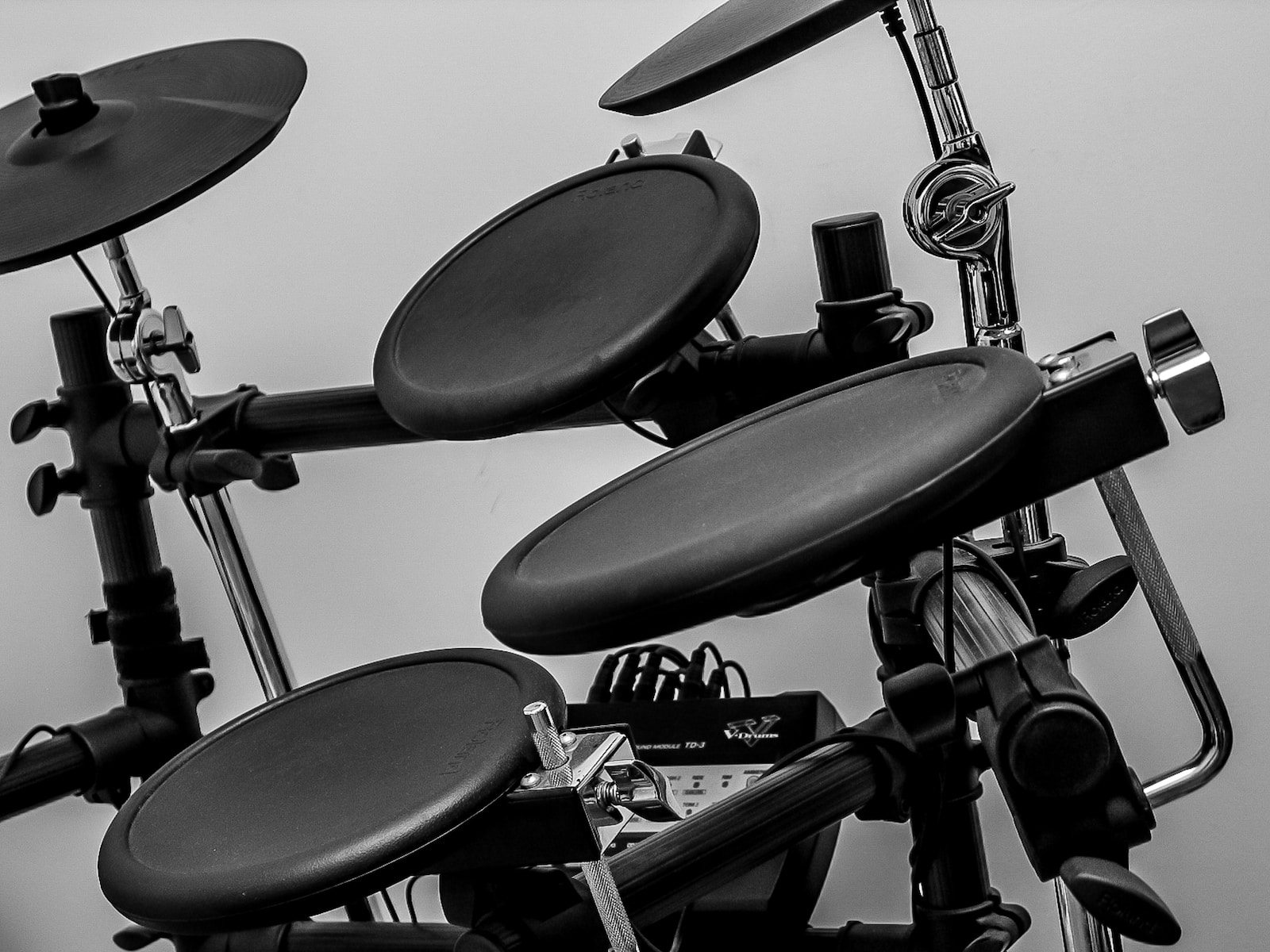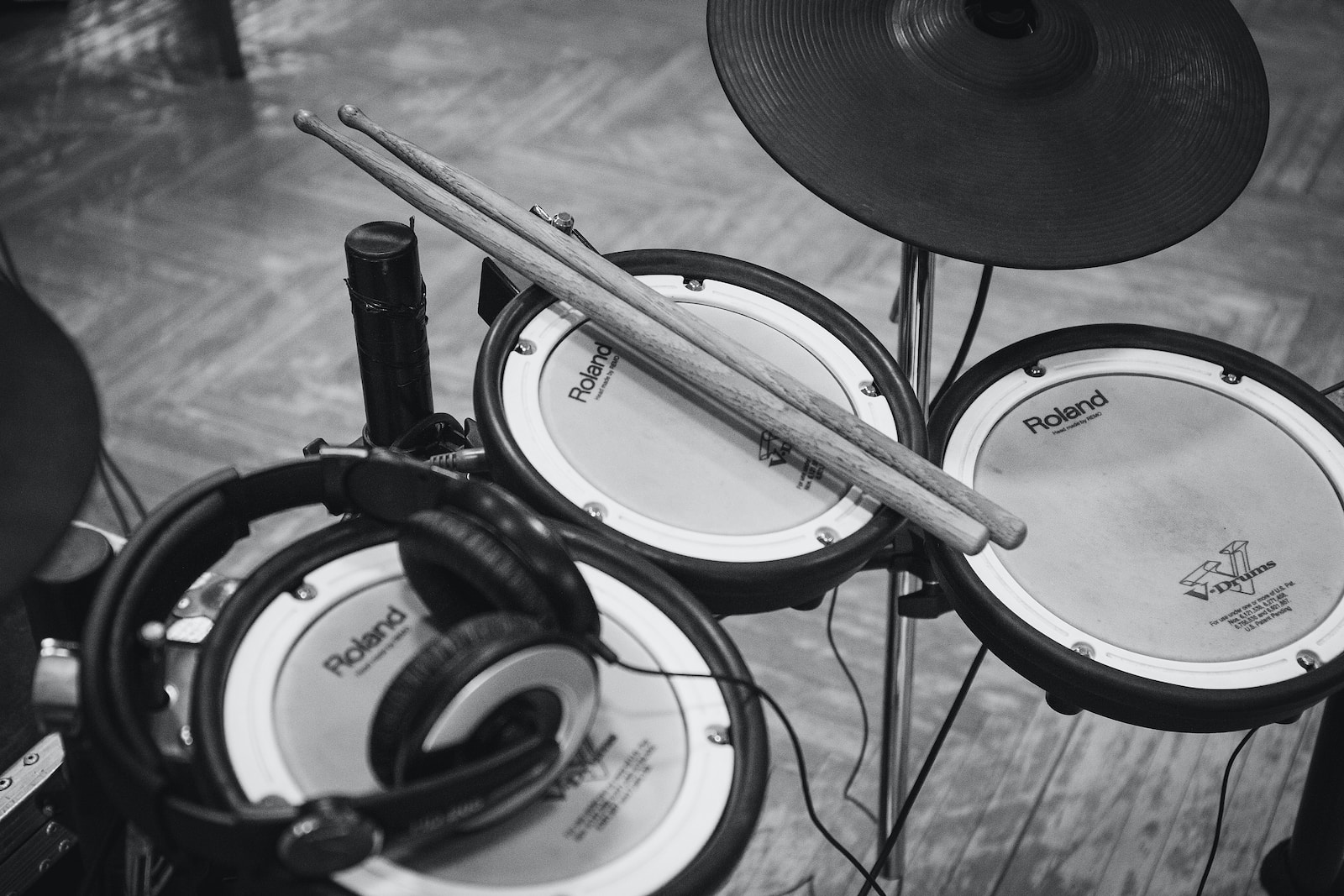 Choosing an electronic drum set can be a daunting task with so many options available. Here are some important factors to consider when choosing an electronic drum set:
Choosing an electronic drum set can be a daunting task with so many options available. Here are some important factors to consider when choosing an electronic drum set:Playing style
Consider the style of music you will be playing and what type of drum sounds you will need. Some electronic drum sets come with a variety of built-in drum kits and sounds, while others may be more customizable. For example, if you are a beginner drummer who is just starting out, you may not need a drum set with a lot of features or advanced technology. Instead, you may want to focus on a basic drum set with a few pads that will allow you to practice and improve your skills.
On the other hand, if you are an advanced drummer who is performing or recording music professionally, you may need a more advanced electronic drum set with a variety of built-in drum kits and sounds, as well as the ability to customize and fine-tune the drum sounds to your liking.
Pad size and number
The size and number of pads you need will depend on your skill level and playing style. A beginner may only need a basic set with a few pads, while a more advanced player may need a larger set with more pads for more complex playing.
- Pad size: The size of the pads on an electronic drum set can affect the overall playing experience. Generally speaking, larger pads provide more space for drummers to play, making them more comfortable and more suitable for drummers with larger hands. However, smaller pads can be more portable and easier to move around, making them ideal for drummers who frequently travel or perform.
Another important aspect to consider is the playing surface of the pads. Some pads have a mesh head, which provides a more realistic feel similar to an acoustic drum, while other pads have a rubber surface which can be more durable and provide a different feel to the player. Consider your preference when it comes to the pad surface material.
- Number of Pads: The number of pads you need will depend on your playing style and the type of music you play. For example, if you are a beginner drummer, you may only need a few basic pads to practice on, such as a snare, bass drum, and a few cymbals. As you advance in skill and begin to play more complex music, you may need more pads to accommodate your playing style and to allow for more advanced playing techniques.

Sound quality
Look for an electronic drum set with high-quality sound that accurately reproduces the sound of an acoustic drum set. Several important factors including:
- Sound engine: Sound module of an electronic drum set can be sample-based or synthesizer-based. If it is sample-based, look for high-quality samples that will produce more realistic, nuanced drum sounds, compared to lower quality samples that can sound artificial or flat. Or, if the engine is synth-based, the quality of the sound may be great, but may be less realistic.
- Sound variety: The variety of drum sounds available on the drum set is also an important factor. Look for sets with a wide range of sounds and kits, including different styles of acoustic drum sets, percussion instruments, and electronic drums.
- Sound editing: The ability to edit and customize the sounds on the drum set is another important factor. Some drum sets come with built-in editing tools that allow you to adjust the tone, volume, and other parameters of each sound. This can help you create more personalized drum sounds and tailor the set to your playing style.
- Dynamic response: The dynamic response of the drum set refers to how the set responds to your playing style, and is especially important for more experienced drummers. Look for sets that offer a high level of dynamic response, so you can accurately replicate the feel and sound of an acoustic drum set.
Connectivity
Consider the connectivity options available, such as USB or MIDI, which can allow you to connect the drum set to a computer or other devices for recording or performance purposes.
- Expansion slot: Some electronic drum modules have extra slots to plug in additional pieces, which allow you to expand your drum sets into more complex configuration, without spending extra money buying a new and larger drum set.
- Audio output: Look for a drum set that has an audio output that can connect to external speakers, amplifiers, or headphones. This will allow you to hear the drum sounds more clearly and accurately, and to adjust the volume as needed. Some drum sets come with built-in speakers, while others require external speakers or headphones.
- MIDI connectivity: MIDI is a digital protocol used to connect electronic musical instruments, computers, and other devices. Look for a drum set that has MIDI connectivity, which will allow you to connect the drum set to a computer or other MIDI-enabled device. This can be useful for recording, composing, or using the drum set as a MIDI controller for other instruments or software.
- USB connectivity: USB connectivity allows you to connect the drum set to a computer or other device using a USB cable. This can be useful for transferring files, updating firmware, or using the drum set as a MIDI controller.
- Bluetooth connectivity: Some electronic drum sets now come with Bluetooth connectivity, which allows you to connect the drum set to other Bluetooth-enabled devices, such as speakers, headphones, or smartphones. This can be useful for practicing or playing along with music on your phone, or for wirelessly connecting to a speaker or amplifier.
- Recording and playback: Look for a drum set that has recording and playback capabilities. Some sets come with built-in recording and playback features, while others may require external devices or software to record or play back drum sounds.
Durability
Make sure the electronic drum set is built to withstand regular use and abuse. Look for a set with sturdy pads and a solid frame.
The frame or rack of the drum set is the backbone of the instrument and is responsible for holding all the components in place. Look for a frame that is made of high-quality materials, such as steel or aluminum, and has sturdy hardware, like clamps and bolts, to ensure that the set remains stable during play.
The pads and cymbals of an electronic drum set are also important to consider when evaluating durability. Look for pads and cymbals that are made of high-quality materials, such as rubber, mesh, or silicone, which can withstand frequent use without losing sensitivity or responsiveness.
Size and portability
Consider the size and weight of the drum set, as well as how easy it is to transport. Some electronic drum sets are designed for portability and may be easier to set up and take down for gigs or practice sessions. Some factors to consider:
- Footprint: Consider the overall size of the set, including the dimensions of the frame, pads, and cymbals. Look for a set that is compact and does not take up too much space, especially if you have limited space for practice or storage.
- Weight: The weight of the set can also affect its portability. Look for a set that is lightweight and easy to move, especially if you plan to transport it frequently to gigs or rehearsals.
- Frame design: The frame or rack of the drum set can also affect its portability. Look for a frame that is designed for easy disassembly, with a compact design that can be easily transported in a carrying case or bag.
- Pad and cymbal size: The size of the pads and cymbals can also affect the portability of the set. Look for pads and cymbals that are compact and lightweight, with a low profile that can be easily transported and stored.










































































































